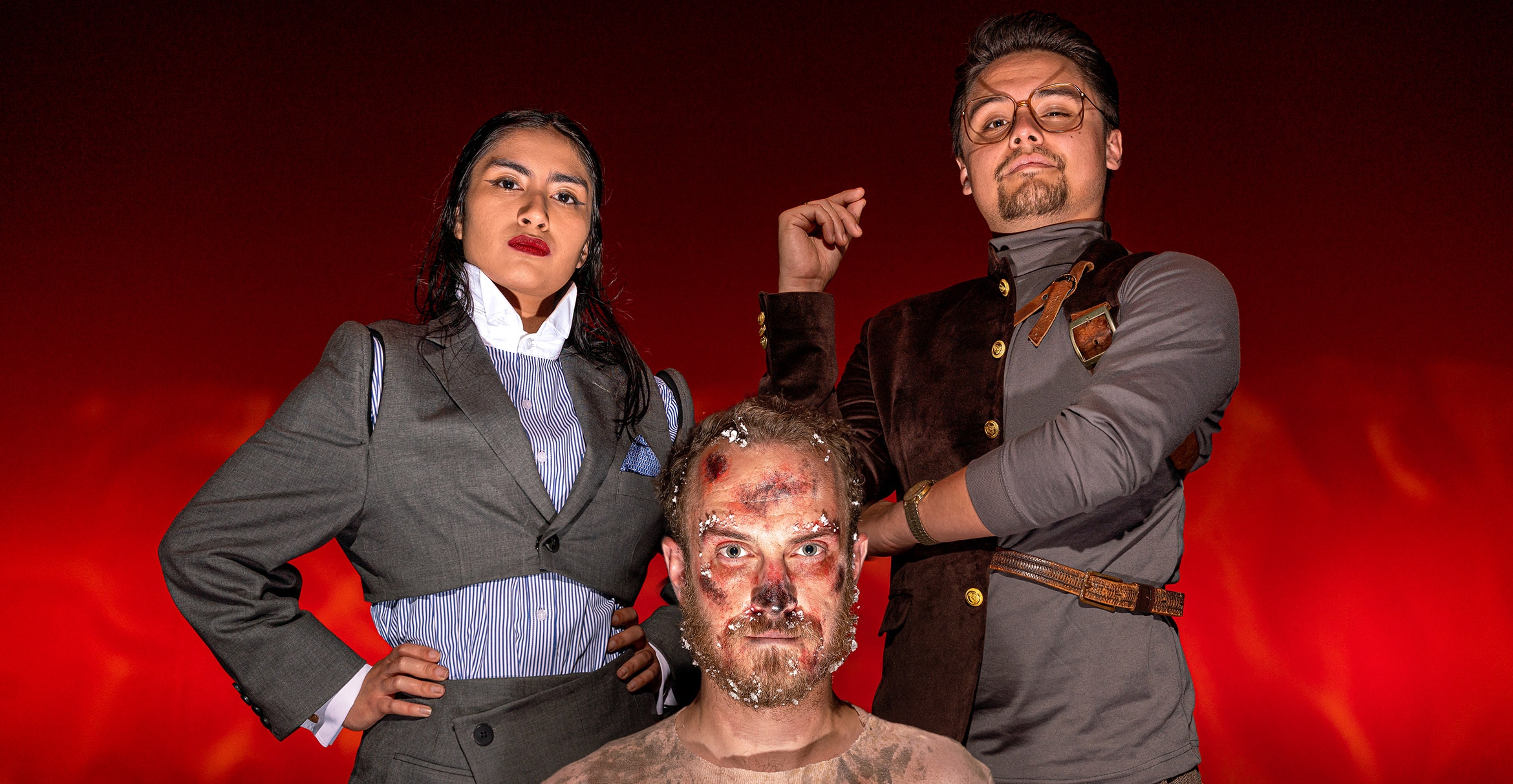
What does purgatory look like?
The artistic team for UC Santa Barbara’s new production of “The Last Days of Judas Iscariot” has spent a lot of time pondering that question over the past year or so.
Stephen Adly Guirgis’s 2005 play is essentially an extended debate over whether the man who betrayed Jesus — and, by extension, others who have done terrible things — is deserving of forgiveness. It is set in a makeshift courtroom in purgatory, a site apparently chosen so that witnesses from both Heaven and Hell can testify.
So what does this peculiar corner of the afterlife, one that is neither clouds and harps nor fire and brimstone, resemble? In this staging, which opens Thursday, May 25 in the Performing Arts Theater on campus, the answer resembles a long-forgotten, sadly forsaken indoor swimming pool.
“When I came across images of an abandoned public pool, it felt like the right environment,” said set designer Ann Sheffield, a professor in the Department of Theater and Dance. “We all latched onto that. It’s a space that was once useful and even joyous, but now is bleak — which makes it a reflection of Judas’ psyche.
“His mind has shut down, and the space has with him. He has given up all hope, so he’s in a space that seems to have given up all hope.”
“I wanted a post-apocalyptic setting,” explained director Kendra Ware. “That speaks a little bit to my view of our judicial system, which you can argue is crumbling.”
“We went around and around on how much debris and litter should be there,” added Sheffield. “There will be random things. There will be a grocery-store shopping cart, as well as a tricycle — odd things that shouldn’t be there. There’s going to be a little stagnant water in the bottom of the pool.”
The costumes will similarly reflect the fact that the judge and attorneys are residents of purgatory. “Some outfits are a hodgepodge they had to piece together,” Ware said. “For example, a female lawyer is wearing a man’s suit that has been repurposed for her. Another character wears a jacket which is made entirely out of oven mittens.
“Among the witnesses, some live in Heaven, some in Hell,” she explained. “That influences their dress. One character comes down from Heaven wearing golf gear. We’re having a lot of fun with it.”
For all its dark humor, however, “The Last Days of Judas Iscariot” deals with serious themes of guilt and forgiveness — including self-forgiveness — and how long a person deserves to be shunned for a committing a bad action. It’s clearly a personal play: The playwright, who won the Pulitzer Prize for the 2015 play “Between Riverside and Crazy,” is the product of an Irish mother and an Egyptian father — and as Ware notes, those are the ethnicities of the prosecutor and defense attorney.
Ware, who once performed in a production of “Between Riverside and Crazy” in a former convent in Italy, describes Guirgis’ use of language as quite distinctive. “In this play, he mixes the reverent and the irreverent in a beautiful way,” she said. “A lot of profanity is used to punctuate a point.
“He grew up in New York City, a place where people come from all over the world and speak many languages. It’s an amazing gumbo of styles and cultures,” Ware continued. “He captures that in his language. Saint Monica, for example, sounds like a young girl from the Bronx, or East L.A. His language is very much reflective of the community he was raised in. He uses it to uplift his characters and give them dignity.”
Judas, in contrast, spends most of the play sitting in stunned silence.
“We’re using a thrust configuration, so the audience is on three sides,” Sheffield said. In a sense, the audience members are the jury, and Judas can’t escape their judgment, no matter where he turns.
This is the first UC Santa Barbara production for the Los Angeles-based Ware, who was approached by members of the theater faculty about directing this play. Originally from the East Coast, she earned a BFA from Sarah Lawrence College and an MFA from Cal Arts in Valencia.
“When I left Sarah Lawrence, I was an actress,” she said. “By the time I got my master’s at Cal Arts, I was more of a multidisciplinary artist. It was there I started directing and creating original pieces, while also acting in shows.”
Ware just completed a stint as the 2022 Lloyd Richards New Futures Resident Artist at Actors Theatre of Louisville in Louisville, Kentucky. While she is new to UC Santa Barbara, she has previous experience in the city: In 2013, she performed excerpts from her autobiographical, one-woman piece “Notes from the Underground” at the Museum of Contemporary Art in Paseo Nuevo.
As a multidisciplinary artist, she remains entranced by the theater. “Especially since COVID, it has really hit home that being in community with one another is very important,” she said. “There’s something about gathering together around the fire and sharing stories.”
Or in this case, the abandoned pool.
………………….
The Last Days of Judas Iscariot will be performed at 7:30 p.m. May 25, 26, 30, 31, and June 1 and 3, and at 2 p.m. May 27 and June 3 and 4, in the Performing Arts Theatre on campus. Tickets are $17 in advance ($13 for students, faculty, staff, or seniors); same-day tickets are $2 more. Information: (805) 893-2064 or https://theaterdance.ucsb.edu/news/event/1000.
Shelly Leachman
Editorial Director
(805) 893-2191
sleachman@ucsb.edu



